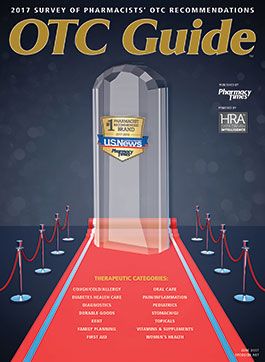Allergic Rhinitis
Allergic rhinitis, which affects an estimated 20% of adults and 40% of pediatric patients, may have a negative impact on an individual’s quality of life, including daily activities, by impairing concentration, causing fatigue, and disturbing sleep.
Allergic rhinitis (AR), which affects an estimated 20% of adults and 40% of pediatric patients, may have a negative impact on an individual’s quality of life, including daily activities, by impairing concentration, causing fatigue, and disturbing sleep. Common symptoms of AR include episodes of repetitive sneezing, nasal congestion, rhinorrhea, and itchy and watery eyes.1 The symptoms commonly associated with AR manifest in patients after the age of 2 years and are prevalent among pediatric patients and adults aged 18 to 64 years.1
AR can be classified as seasonal (hay fever) or perennial.1,2 Seasonal allergic rhinitis (SAR) symptoms occur in spring, summer, and/or early fall and are caused by allergic sensitivity to pollen from trees, grasses, weeds, or airborne mold spores.1,2 Unfortunately, individuals with perennial allergic rhinitis (PAR) typically experience year-round symptoms, which are caused by hypersensitivity to dust mites, animal dander, cockroaches, and/or mold spores.1,2 Some individuals with rhinitis do not have allergies.3 These patients are classified as having non-AR, and the causes of symptoms include the use of certain medications (eg, beta-blockers, angiotensin-converting enzyme inhibitors, oral contraceptives, clonidine, aspirin and other nonsteroidal anti-inflammatory drugs), overuse of topical decongestants, hormonal changes, structural defects, and nasal polyps.1,3
Although there is no cure for AR, many treatment options are available for managing or reducing the symptoms. Therapy, which may involve environmental control measures, allergen avoidance, pharmacologic therapy, and immunotherapy, must be tailored to meet the patient’s individual needs because the severity and incidence of AR vary.1,2 Treatment of SAR and PAR are typically identical; however, individuals with PAR may be able to alleviate symptoms by environmental control.1,2 Nonprescription products marketed for the symptomatic relief and management of AR symptoms are available in formulations for adults and children. These products include oral and ocular antihistamines; oral, nasal, and ocular decongestants; mast cell stabilizers; and intranasal corticosteroid inhalers.
References
- Scolaro K. In: Krinsky D, Ferreri S, et al, eds. Handbook of Nonprescription Drugs. 18th ed. Washington, DC: American Pharmacists Association; 2015.
- Types of allergic rhinitis. College of Allergy, Asthma and Immunology website. http://acaai.org/allergies/types/hay-fever-rhinitis. Published 2014. Accessed April 25, 2017.
- Sheikh J, Jean T. Allergic rhinitis. eMedicine website. emedicine.medscape.com/article/134825-overview. Accessed April 24, 2017.

